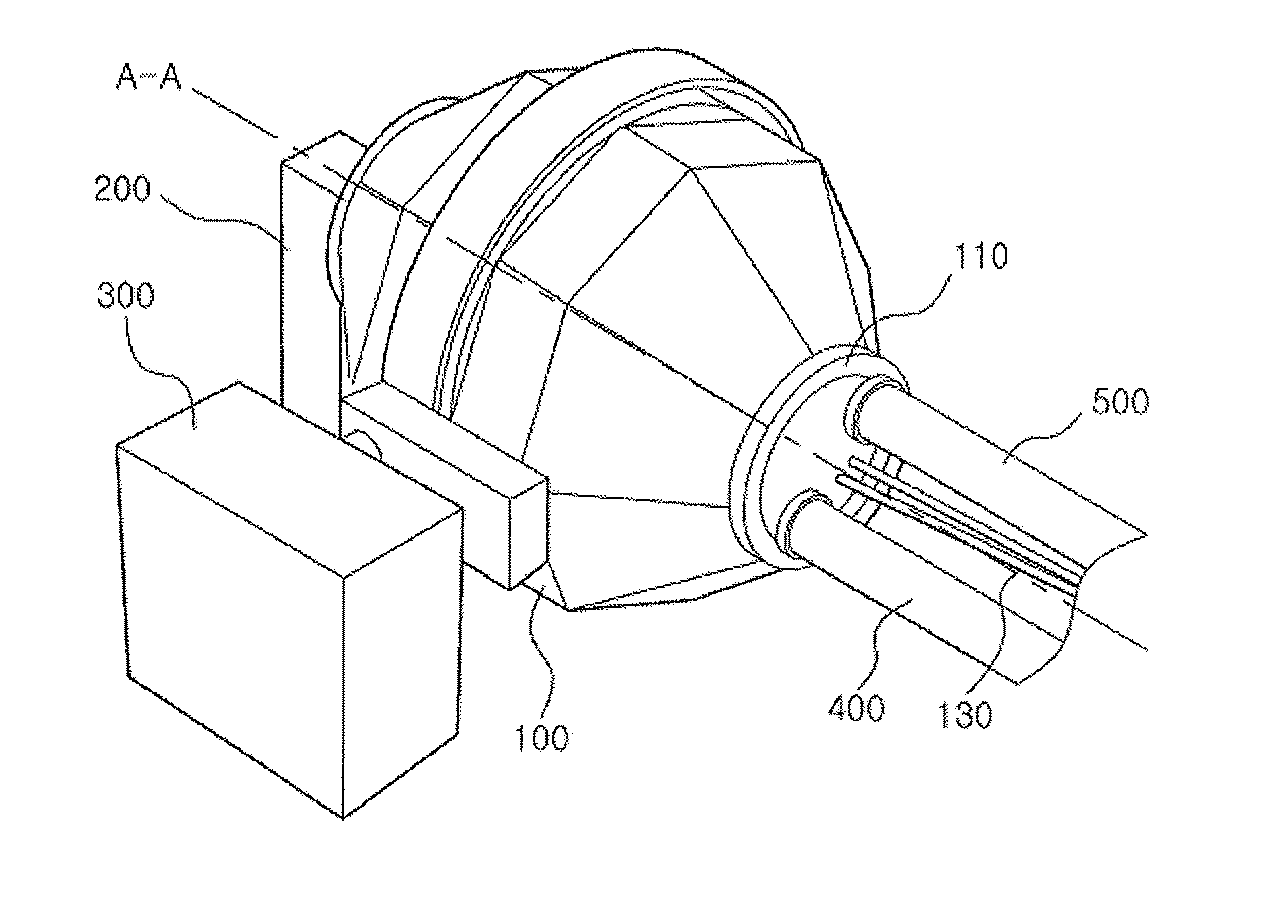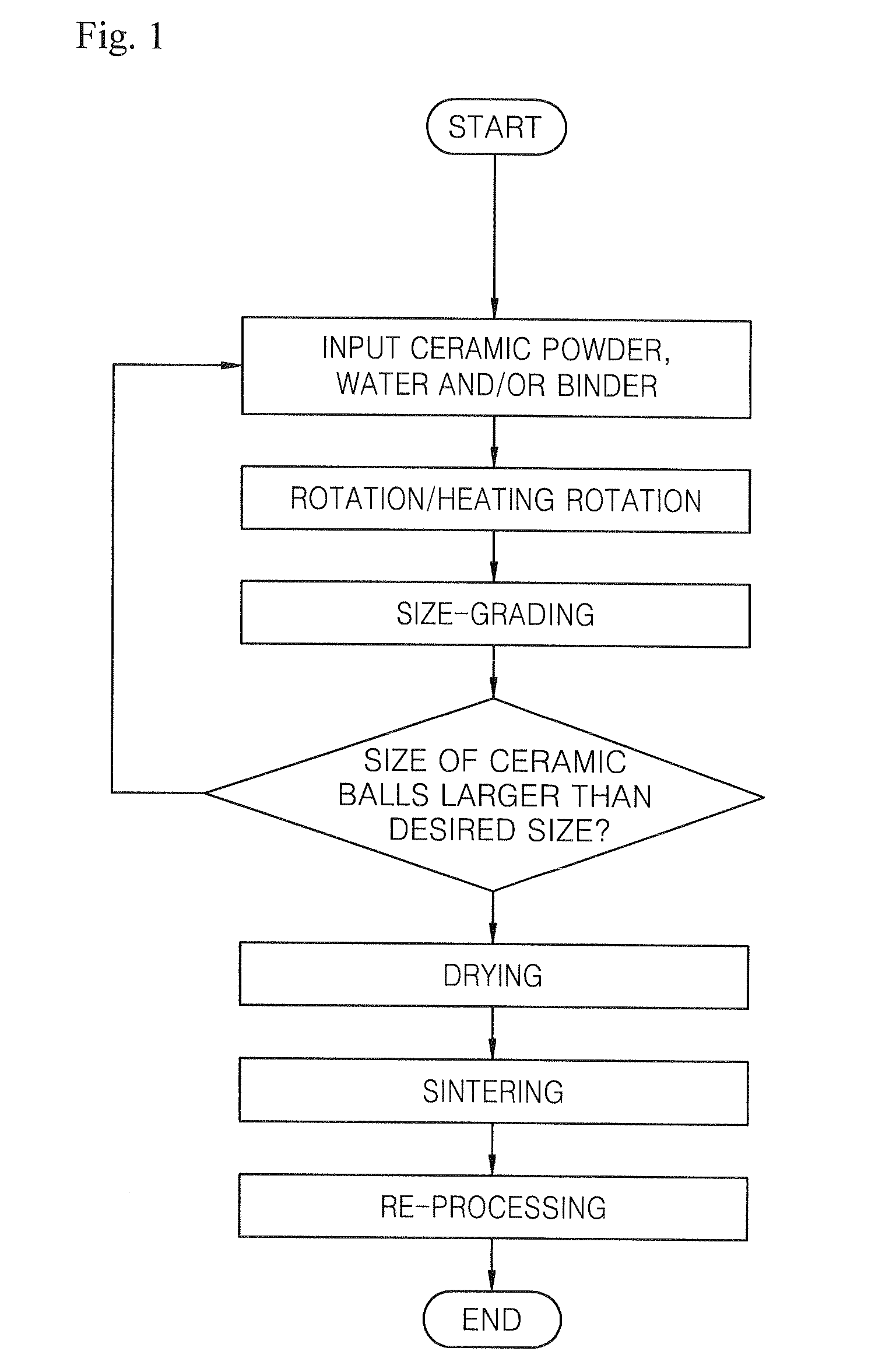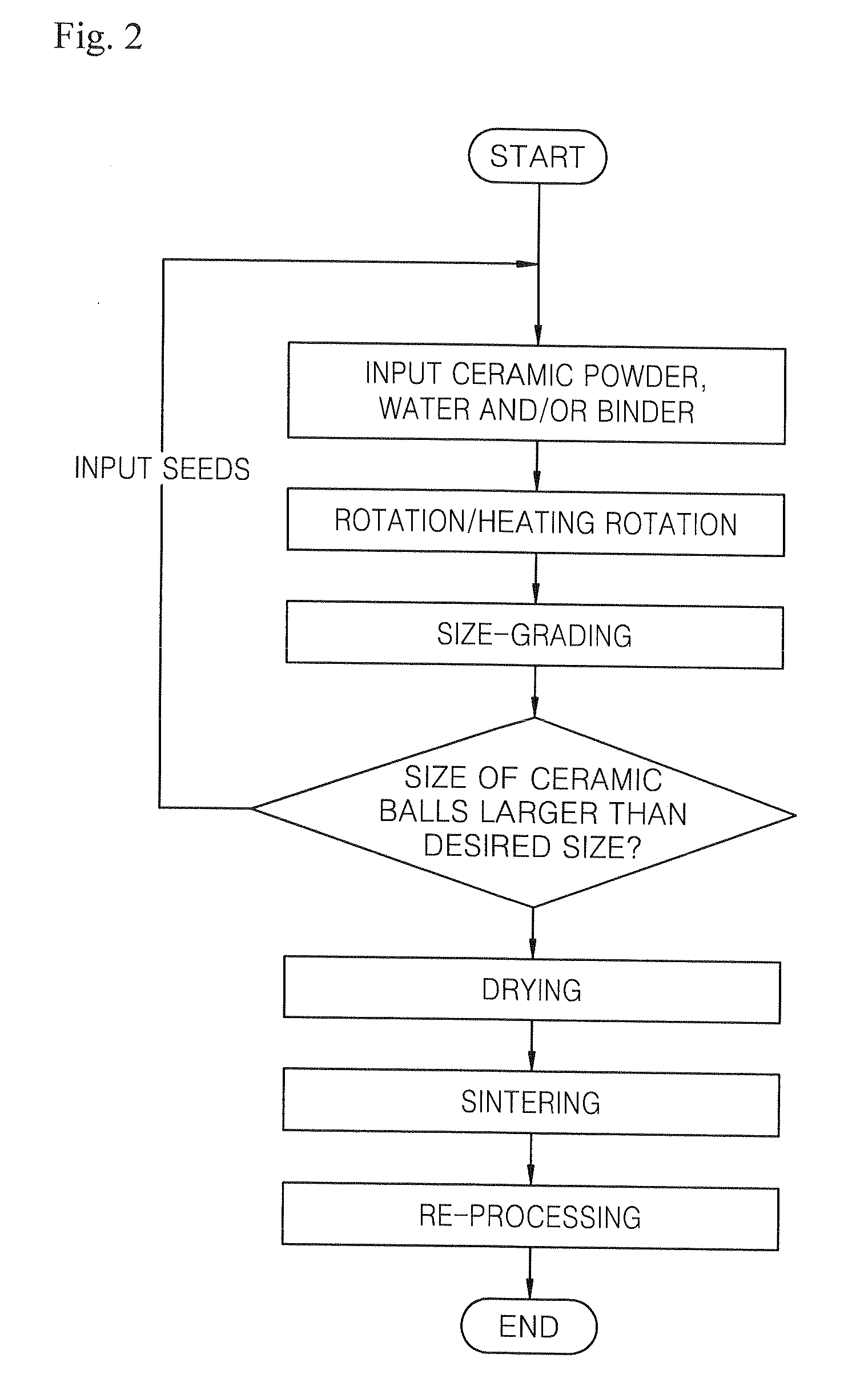Production method for a truly spherical ceramic ball by means of a rotational method, and a device therefor
a production method and technology of ceramic balls, applied in the field of truesphere type ceramic balls produced in a rotation manner, can solve the problems of difficult to form truly spherical ceramic balls and limit the production efficiency of a large quantity of ceramic balls, and achieve the effects of facilitating the formation of ceramic balls, improving the strength of ceramic balls, and facilitating the grading of ceramic balls
- Summary
- Abstract
- Description
- Claims
- Application Information
AI Technical Summary
Benefits of technology
Problems solved by technology
Method used
Image
Examples
example 2
[0073]5 mm ceramic balls were produced using the same materials as in Example 1.
[0074]1 mm seeds were placed in the rotary drum together with 500 g of ceramic powder (excluding PVA), and water and PVA were sprayed while the rotary drum was rotated at 250 rpm with the rotary axis A-A tilted at an angle of 10 degrees to grow ceramic grains to a diameter of 5 mm.
[0075]Final ceramic balls had particle size distribution shown in Table 3.
TABLE 3Diameter5 mm or more5~3 mm3 mm or lessFinal wt %87%9%4%
[0076]As can be seen from Table 3, final ceramic balls had excellent particle size distribution.
[0077]5 mm or more ceramic balls were dried at 80° C. for 12 hours, followed by sintering at 1100° C. for 15 hours.
example 3
[0078]5 mm ceramic balls were produced using the same material as example 1.
[0079]500 g of ceramic powder (excluding PVA) was placed in the rotary drum, and 50 g of water, which corresponds to 10% of the total weight of the ceramic powder, was sprayed at 10 m / s towards the ceramic powder through the nozzle 130 while the rotary drum was rotated at 20 rpm with the rotary axis A-A tilted at an angle of 20 degrees to grow ceramic gains to a diameter of 1 mm.
[0080]A 1.5 mm screen sieve 600 was mounted on the rotary drum 100 and 0.5 to 1 mm ceramic balls (seeds) were size-graded. Next, graded seeds were input together with 500 g of ceramic powder, and water was sprayed while the rotary drum was rotated at 250 rpm with the rotary axis A-A tilted at an angle of 10 degrees to grow the ceramic gains to a diameter of 5 mm.
[0081]Final ceramic balls had particle size distribution shown in Table 4.
TABLE 4Diameter5 mm or more5~3 mm3 mm or lessFinal wt %81%12%7%
[0082]As can be seen from Table 4, th...
example 4
[0084]5 mm ceramic balls were produced using the same material as example 1.
[0085]500 g of ceramic powder (excluding PVA) was placed in the rotary drum, and 50 g of water was sprayed at 10 m / s through the nozzle 130 while the rotary drum was rotated at 20 rpm with the rotary axis A-A tilted at an angle of 20 degrees to grow ceramic gains to a diameter of 1 mm.
[0086]Next, the inner temperature of the rotary drum was elevated to 100° C. by blowing hot air using the heater 400, and was cooled to a certain temperature while the rotary drum was rotated.
[0087]500 g of ceramic powder was input again into the rotary drum, and water was sprayed towards the ceramic powder while the rotary drum was rotated at 250 rpm with the rotary axis A-A tilted at an angle of 10 degrees to grow the ceramic gains up to a diameter of 5 mm.
[0088]Final ceramic balls have particle size distribution shown in Table 5.
TABLE 5Diameter5 mm or more5~3 mm3 mm or lessFinal wt %80%13%7%
[0089]As can be seen from Table 5,...
PUM
| Property | Measurement | Unit |
|---|---|---|
| size | aaaaa | aaaaa |
| diameter | aaaaa | aaaaa |
| temperature | aaaaa | aaaaa |
Abstract
Description
Claims
Application Information
 Login to View More
Login to View More - R&D
- Intellectual Property
- Life Sciences
- Materials
- Tech Scout
- Unparalleled Data Quality
- Higher Quality Content
- 60% Fewer Hallucinations
Browse by: Latest US Patents, China's latest patents, Technical Efficacy Thesaurus, Application Domain, Technology Topic, Popular Technical Reports.
© 2025 PatSnap. All rights reserved.Legal|Privacy policy|Modern Slavery Act Transparency Statement|Sitemap|About US| Contact US: help@patsnap.com



